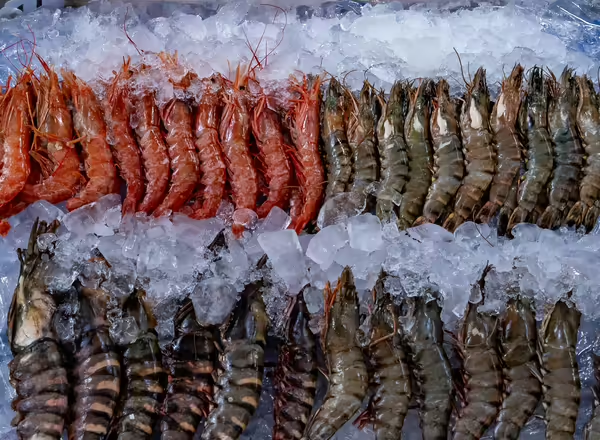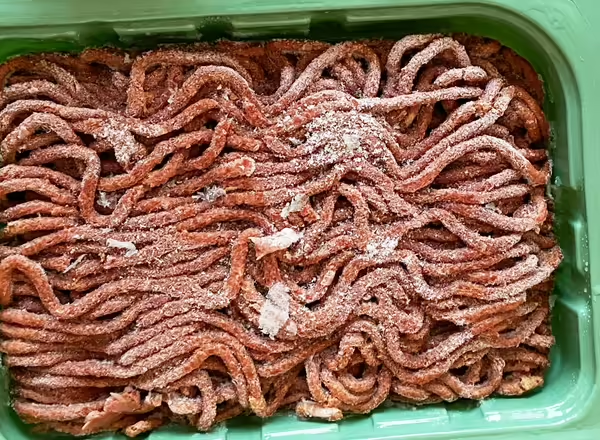
Shopping
What meat you buy and how you get it home matters for preventing foodborne illness.
Top Tips
- Shop for raw meat, poultry, and seafood products last.
- Keep frozen and refrigerated foods together in the cart.
- Place meat packages in plastic bags to collect dripping meat juices.
- At home, move meat quickly into to cold storage. (Read more about traveling with meat.)

If you don't often look at your meat packages before you buy, now it a great time to start.
Mold. Fresh meat should be mold-free. Cured and smoked meats may occasional have mold on the surface. Choose a different package, or as recommended by USDA, wash the meat with hot water and scrub the mold off with a stiff vegetable brush.
Leaks. Meat will come wrapped, including in vacuumed-sealed packaging, on trays wrapped in plastic, in butcher paper, and in bags sealed on both ends. Look for packaging that is fully sealed, has no holes, tears, or punctures, and is not leaking meat juices.
Sell-by dates. Sell-by dates are for the store selling meat. Buy meat with a sell-by date several days from when you plan to use it. Or if buying on the sell-by date, cook it that day or move the meat into a freezer.
Color. Meat color alone is not an indicator of food safety or spoilage. Colors of meat ranging from red to brown to gray are often about oxygen exposure, store lights, and type of packaging. Instead of color, purchase meat by the sell-by date and throw out meat that has off smells or feels slimy. For more about meat and poultry colors, visit The Color of Meat and Poultry from USDA.

From raw (frozen) meat to pre-cooked frozen meat that needs to be reheated, take steps to select good quality frozen food.
Frozen solid. Frozen meat from a store should be solidly frozen. If a frozen meat package has frozen liquid or ice on the surface of a package, this often indicates the meat has been above freezing at some point during transport and storage, which could be a food safety concern. If the packaging is transparent, see if there are ice crystals on the meat. In both cases, avoid buying this meat.
Freezer burn. Meat stored for a long time in the freezer or in packaging not designed for a freezer is likely to get freezer burn. This looks like dry, leathery spots on meat. It is safe to eat meat that has freezer burn, but many people choose to cut off the burnt parts before cooking or throw out the meat entirely. Read more about storing meat for best quality.

Buying meat and seafood this way supports local businesses and is of good quality.
The good news is that more and more farmers and ranchers are selling their meat direct-to-consumer or sell through area meat processors (or butchers), farmers markets and grocery stores. You can also buy local chicken eggs and farm-raised seafood through aquaculture operations in Illinois.
Talk to a farmer or rancher. Farmers and ranchers will gladly tell you about their operation and animal-raising practices.
Talk to a meat processor or butcher. Workers have knowledge about meat grades and can make recommendations on what cuts to purchase based on what you want to cook.
Want to sell meat in Illinois? Talk with a member of the Local Food Systems and Small Farms team at Illinois Extension.
Live near the Urbana-Champaign campus? Shop local meats from Animal Science Meat and Egg Sales.